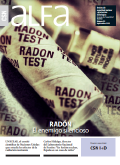 |
 |
 |
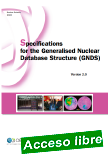 |
Specifications for the Generalised Nuclear Database Structure Version 2.0
OECD 2023 NEA No. 7647
Knowledge of basic nuclear physics data is essential for the modelling and safe operation of all types of nuclear facilities. The de facto international standard format, Evaluated Nuclear Data File 6 (ENDF-6) format, was designed originally for 1960s era punch-card readers. The replacement of the system of codes built off this format has been recognised as an important initiative.
|
The ability to use increasingly high-fidelity nuclear physics, coupled to accurate uncertainties, is crucial for advanced simulations. This in turn requires more detailed and accurate data, then requiring improvements to the data storage standards, simultaneously enabling robust Quality Assurance and transfer of knowledge to the next generation. In 2013, the NEA Working Party on International Nuclear Data Evaluation Co-operation (WPEC) launched a project to review the requirements for an international replacement for ENDF-6. The recommendations prompted the creation of a new Expert Group on a Generalised Nuclear Data Structure (GNDS) in 2016 that has used these requirements as the framework for a new format specification. Following rigorous international review, version 1.9 was unanimously approved as the first official published format in 2020. Since then, some 149 formal change requests were made to add new features and clarifications to the specifications, which were unanimously approved for publication in this release as version 2.0.
|
 |
 |
CSNI Technical Opinion Paper No. 21: Research Recommendations to Support the Safe Deployment of Small Modular Reactors
OECD 2023 - NEA No. 7660
CSNI Technical Opinion Paper No. 21: Research Recommendations to Support the Safe Deployment of Small Modular Reactors
While there is a growing interest in the deployment of small modular reactors (SMRs) as a promising option to help mitigate climate change, further international efforts are needed to accelerate the development and safety demonstration of the innovative technologies that are being considered for many of these SMRs.
|
This publication presents the actions taken by the NEA Committee on the Safety of Nuclear Installations (CSNI) and its expert group on SMRs to define the areas of future CSNI research and safety assessment work needed to support sound safety demonstrations for SMRs. The proposed activities address four areas: support for regulatory harmonisation, common safety issues of interest for different designs, experimental campaigns, and benchmarking for computer code validation and verification.
|
 |
 |
CSNI Status Report and Perspectives: Advances in the Analysis and Management of Accidents and Future Challenges
OECD 2023 NEA No. 7658
The Nuclear Energy Agency (NEA) Working Group on the Analysis and Management of Accidents (WGAMA) aims to contribute to the assessment of the prevention, mitigation and management of accidents, ultimately furthering reactor safety by improving the state of knowledge andknowledge management.
|
This activity is pursued under the NEA Committee for the Safety of Nuclear Installations (CSNI) as a follow-on to the work of the former principal working group (PWG)-2 on coolant system behaviour and that of PWG-4 on the confinement of accidental radioactive releases. The WGAMA activities relate to potential accident situations in nuclear power plants and mainly focus on existing reactors, with some applying to advanced reactor designs as well. It has over 100 participants from 28 countries to pursue such a wide scope, with more than 400 scientists and engineers involved. Such experts are both contributors to the activities and beneficiaries of the outcomes. This report aims to facilitate communication between reactor safety stakeholders by summarising the main aspects of the WGAMA’s activities: the context and key safety topics related to the analysis and management of accidents; the approach and methodologies to cope with reactor safety issues; recent reactor safety issues that have been dealt with; and a discussion of potential future activities.
|
 |
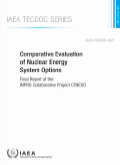 |
Comparative Evaluation of Nuclear Energy System Options
IAEA-TECDOC-2027 ¦ 470 pages ¦ Date published: 2023
This report documents the outputs of the INPRO collaborative project "Comparative Evaluation of Nuclear Energy System Options" (CENESO). The overall objectives of CENESO were to apply the approach to comparative evaluation of system/scenario options developed in the previous INPRO collaborative project and published in IAEA Nuclear Energy Series NG-T-3.20. The current publication presents new case studies and elaborates upon previous ones to extend the Key Indicators for Innovative Nuclear Energy Systems (KIND) approach to develop additional modules for enhancing the resolution among compared alternatives.
|
The supplementary online files provide the latest version of the KIND Excel Tool (KIND-ET) and its extensions complete with user instructions.
|
 |
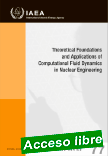 |
Theoretical Foundations and Applications of Computational Fluid Dynamics in Nuclear Engineering
IAEA Training Course Series No. 77 ¦ 147 pages ¦ Date published: 2023
This publication is based on the course materials presented at the Joint ICTP–IAEA Course on Theoretical Foundations and Application of Computational Fluid Dynamics in Nuclear Engineering held in 2021. The course covered the basics of computational fluid dynamics in the field of nuclear engineering, from mathematical description to numerical representation and physical modelling.
|
The concepts taught in course lectures were reinforced with practical hands-on virtual training exercises and demonstrations using open source software. The training materials from the course were compiled, edited and supplemented to create this publication as a resource for conducting similar training courses, as a reference for education and training programmes, and for direct use by trainees, university students and professors.
|
 |
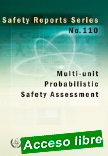 |
Multi-unit Probabilistic Safety Assessment
IAEA Safety Reports Series No. 110 ¦ STI/PUB/1974 ¦ 265 pages ¦ Date published: 2023
The accident at the Fukushima Daiichi Nuclear Power Plant underlined the need to assess the nuclear safety of multi-unit sites considering the accident sequences involving more than one reactor units on site. The objective of this Safety Report is to provide a methodology for the development of a Multi-unit Probabilistic Safety Assessment (MUPSA).
|
It provides practical examples and an overview of the actual state of practice in this area. The publication provides a detailed description of Level 1 MUPSA methodology, the principles of development of Level 2 MUPSA models and the path forward for multi-unit consequence analysis (Level 3 MUPSA). In addition, it summarizes the experience available in Member States in the area of MUPSA. The scope of this Safety Report includes consideration of various hazards and plant operational states normally considered in PSA development in the multi-unit context.
|
 |
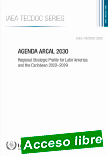 |
Agenda ARCAL 2030 - Regional Strategic Profile for Latin America and the Caribbean 2022–2029
IAEA-TECDOC-2028 ¦ 192 pages ¦ 7 figures ¦ Date published: 2023
This publication sets out the Agenda ARCAL 2030, the title given to the Regional Strategic Profile for Latin America and the Caribbean for the period from 2022 to 2029. It will serve as a key programmatic reference for the formulation of regional technical cooperation projects.
|
As with previous editions of the Regional Strategic Profile, the IAEA, the Regional Co-operation Agreement for the Promotion of Nuclear Science and Technology in Latin America and the Caribbean (ARCAL) and representatives of Member States collaborated closely on the drafting of this new strategic programming framework. The new framework aims to address those of the region’s priority needs and problems where nuclear technology can make an effective and tangible contribution. Consideration was given to the following aspects when preparing the Agenda ARCAL 2030: evaluation of results achieved during the project cycles for the previous period; identification of conceptual and methodological adjustments required to improve the preparation process for the Regional Strategic Profile; mobilization of the participating institutions and their level of involvement in projects; and communication of project results and their benefits for the region. In addition, the Agenda ARCAL 2030 took into consideration those United Nations Sustainable Development Goals to which nuclear technology can contribute directly. The Agenda ARCAL 2030 includes projects from the 2020–2021 biennium, the last biennium of the 2016–2021 Regional Strategic Profile; covers projects for the upcoming 2022–2023 biennium, selected according to an assessment of the results of the 2016–2021 Regional Strategic Profile project cycles; and extends as far as the 2028–2029 biennium.
|
 |
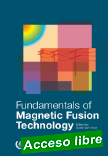 |
Fundamentals of Magnetic Fusion Technology
English ¦ STI/PUB/1945 ¦ 750 pages ¦ Date published: 2023
This high level text book is written for graduate students focussing on fusion technology, as well as for established plasma physicists and others working in the field and requiring a comprehensive overview. The need for an integrated and international fusion education programme is further motivated by the increasingly important role of industry in fusion research and development (R&D).
|
Over the coming decades fusion R&D will shift from being science-driven and laboratory-based towards a technology-driven, industry-based venture. Significant innovation is and will be required in some areas, such as breeding blanket technology, plasma-facing and structural materials, superconducting magnets, microwave sources, high power beam sources, remote handling, control technology and fuelling and pumping systems. Furthermore, the transition will focus on technologies and standards associated with the ‘nuclearization of fusion’ which has consequences for the required competences of the workforce. The main objective of this publication is to contribute to the consolidation and better exploitation of the achievements already reached in the past to tackle the present challenges in preparing the workforce in the different areas, with special attention to continuous professional development and life-long learning. It includes chapters on fusion technology relevant to diagnostics, confinement and plasma control, as well as ones dedicated to plasma heating and current drive technology, plasma facing components, neutronics, reactor materials, vacuum pumping and fuelling, tritium handling and remote maintenance.
|
 |
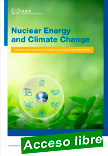 |
Nuclear Energy and Climate Change: Questions and Answers on Progress, Challenges and Opportunities
IAEA/PAT/002 ¦ English ¦ 32 pages ¦ Date published: 2023
This publication presents a synthesis of the IAEA’s submission to the Global Stocktake in the form of a series of questions and answers addressing the contribution of nuclear energy to climate change mitigation, adaptation, finance and technology, along with economic aspects and cross-cutting
issues. These topics are elaborated further in recent IAEA publications, including Nuclear Energy for a Net Zero World and Climate Change and Nuclear Power 2022.
|
.
|
 |
| |
|
|
 |
| |
|
|

|
|
|
| |
|
|
| |
| |
|
|
| |
| |
|
|
| |
| |
|
|
|
| |
| |

